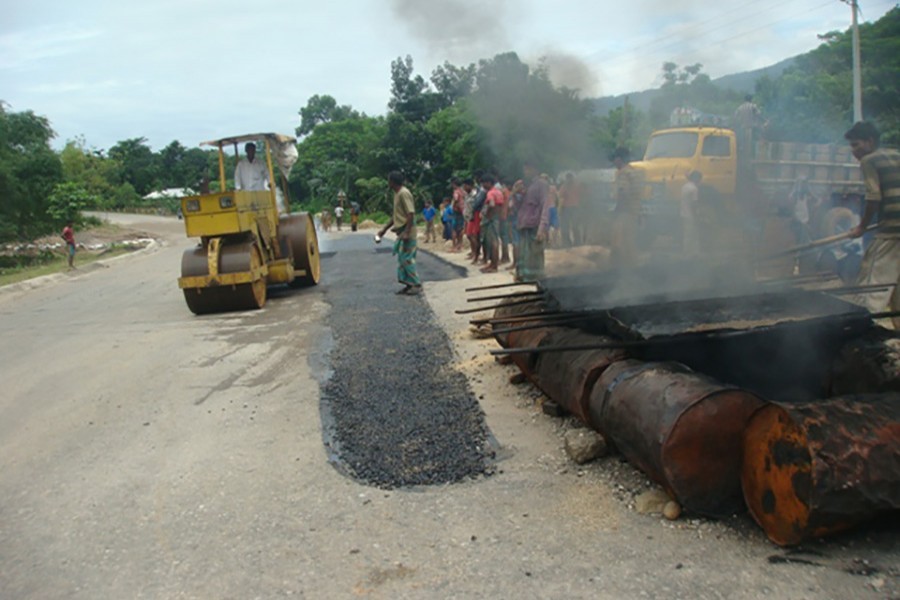It is no secret that a sizeable part of roads and highways under the state agency called Roads and Highways Department (RHD) does need repair and reconstruction every year. But the long stretches of roads and highways that actually require such treatment is extensive.
The Highways Development and Management (HDM), a wing of the RHD, has reportedly estimated that more than 8,500 kilometres of roads and highways belonging to the RHD are strong candidates for either repair or reconstruction.
The HDM estimates that the cost of rehabilitating the damaged roads would be over Tk 100 billion. The amount is equivalent to 40 per cent of the allocation made in the Annual Development Programme (ADP) for the roads and transport sector during the current financial year, 2019-20, to implement new projects.
However, the government is found to be more interested in allocating funds for new roads and the amount it allocates for road rehabilitation is too meagre against the requirement. Such inadequate allocation, thus, leads to one inevitable consequence---continuous sufferings of the users of these roads. Often, they are made to suffer for years together.
Local influential people, lawmakers and other people's representatives in particular, usually do contribute to the sufferings of people due to dilapidated roads. The former group is found to be more interested in building new roads. They lobby hard to get new road projects approved. The reason for these people showing greater interest in new roads is not difficult to understand.
One of the main reasons for a long stretch of roads and highways needing rehabilitation has been the lack of adherence to quality work during their construction. With a view to usurping a sizeable part of the road project money, the contractors and RHD officials concerned do deviate from the original construction specifications. There have been instances galore where newly-built roads developed cracks or other problems within months after their construction. The much publicised Dhaka-Chittagong Highway is a glaring example. Many parts of the highway needed repair much before the completion of the road project. If the situation turns out to be so bad in the case of such a high-profile road project, one can guess the state of other roads built every year across the country, including those in remote areas.
The government does need to change its strategy as far as the road sector is concerned. It should reduce allocation resources for new roads and highways and divert the same to the repair and reconstruction of the damaged ones. On top of everything, it has to ensure quality in the case of building new roads and also in repair works. Otherwise, resources would continue to go down the drain. However, it is not possible to ensure keeping the existing mechanism in place. The government has to find out an effective monitoring and supervision mechanism for construction and repair of roads and bridges. The IMED (Implementation, Monitoring and Evaluation Division) could have been the right body. But it does not have enough manpower and logistics to do the job. The government might think of engaging an independent Road and Highways Commission, formed with competent technical persons, for the purpose.


